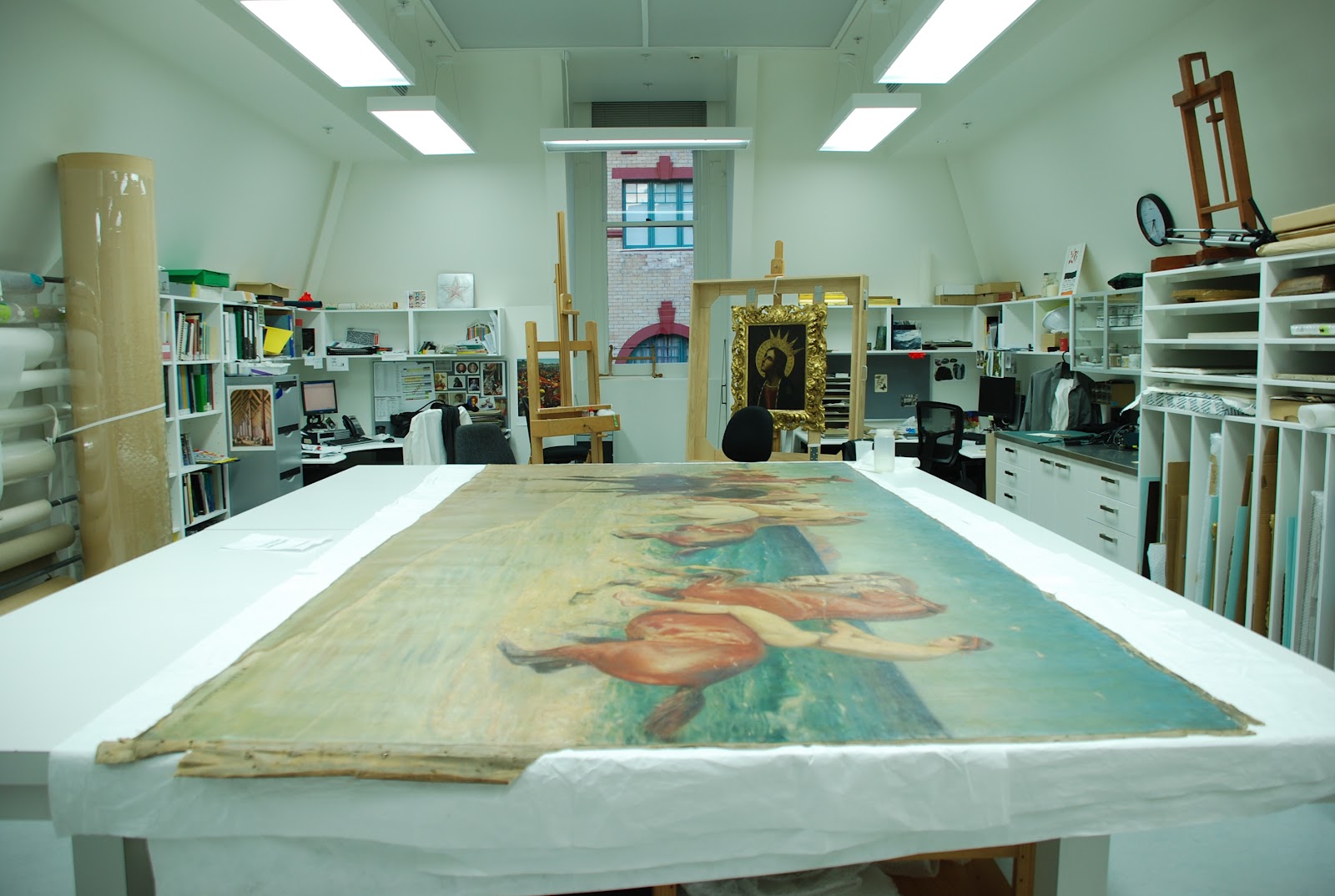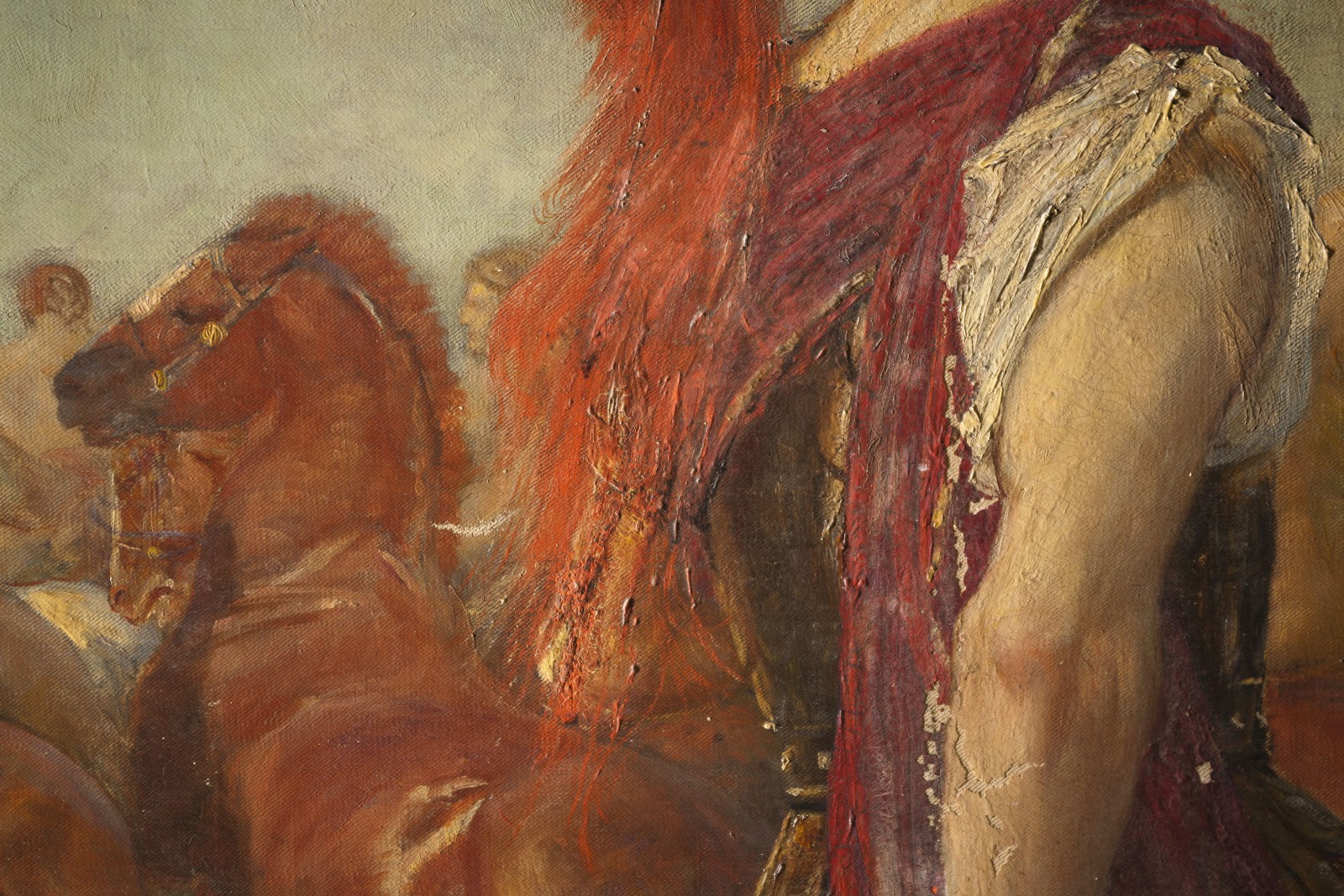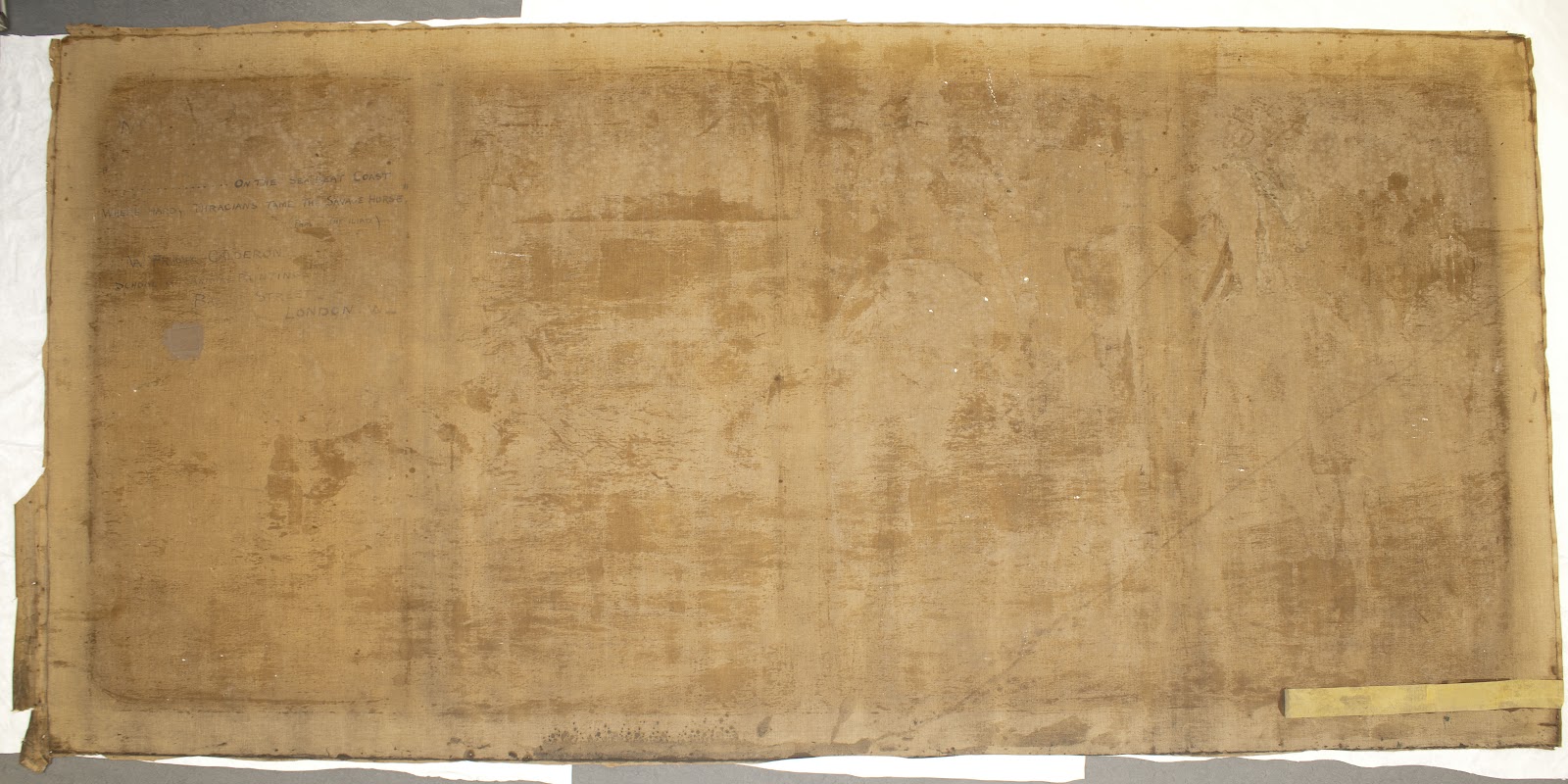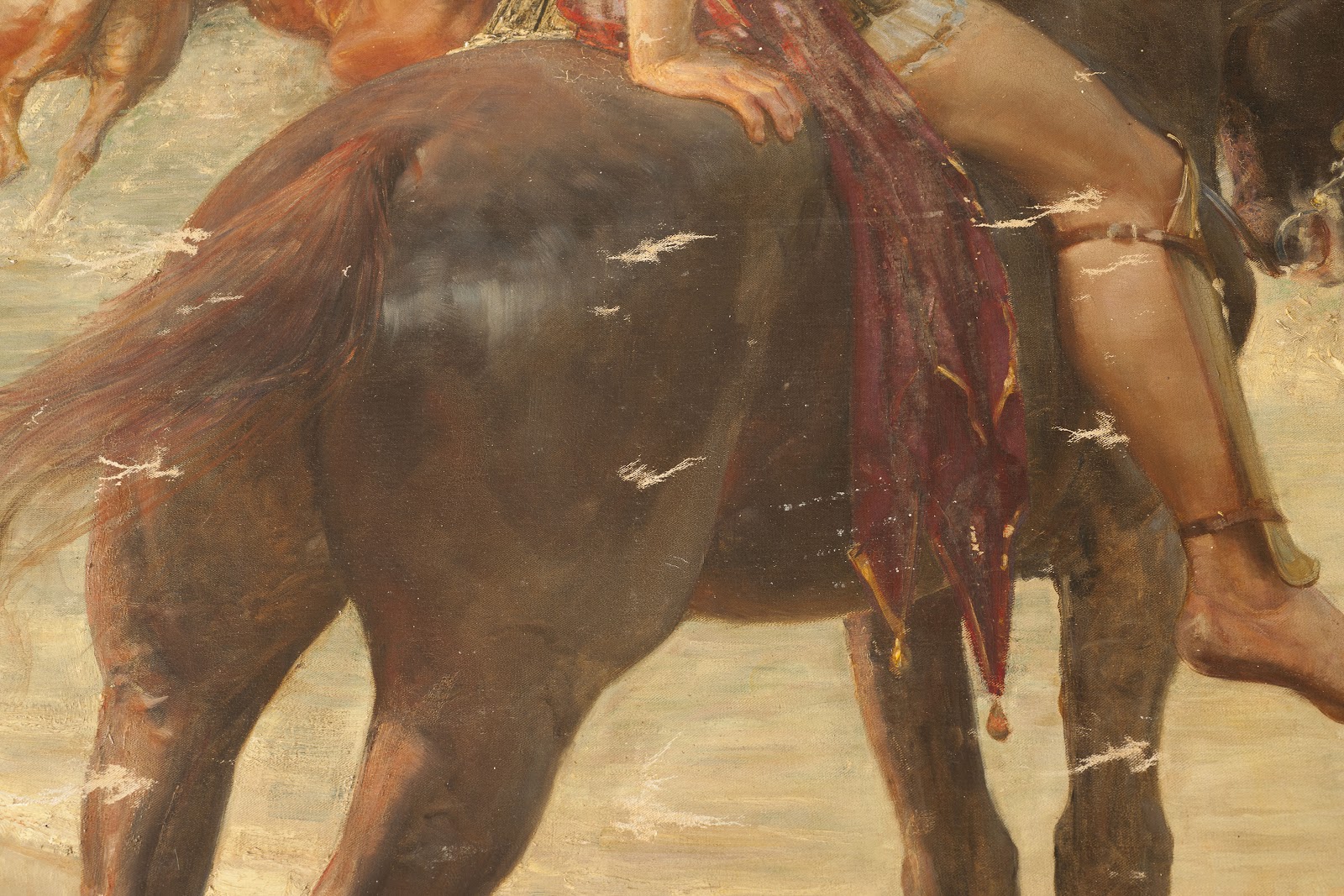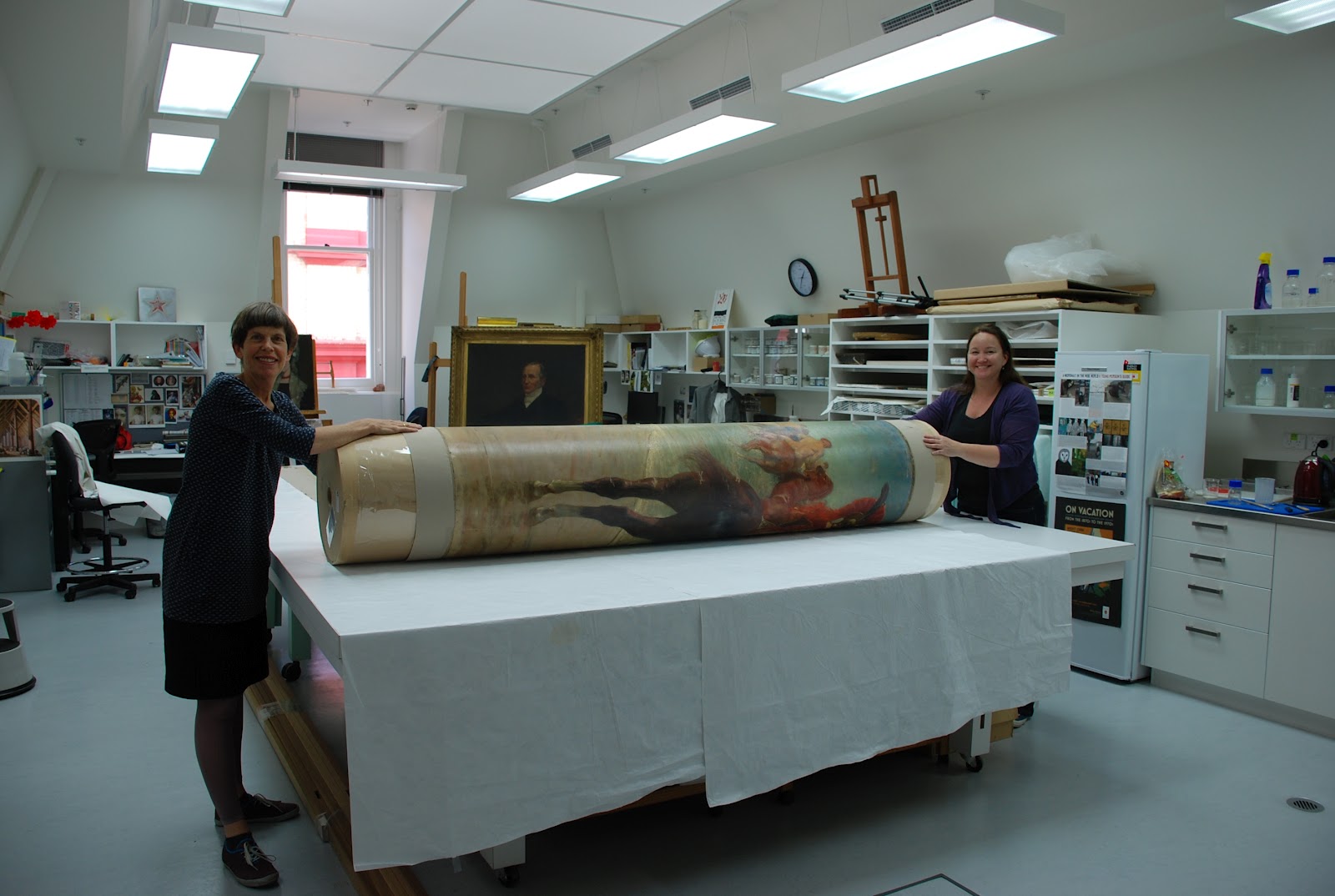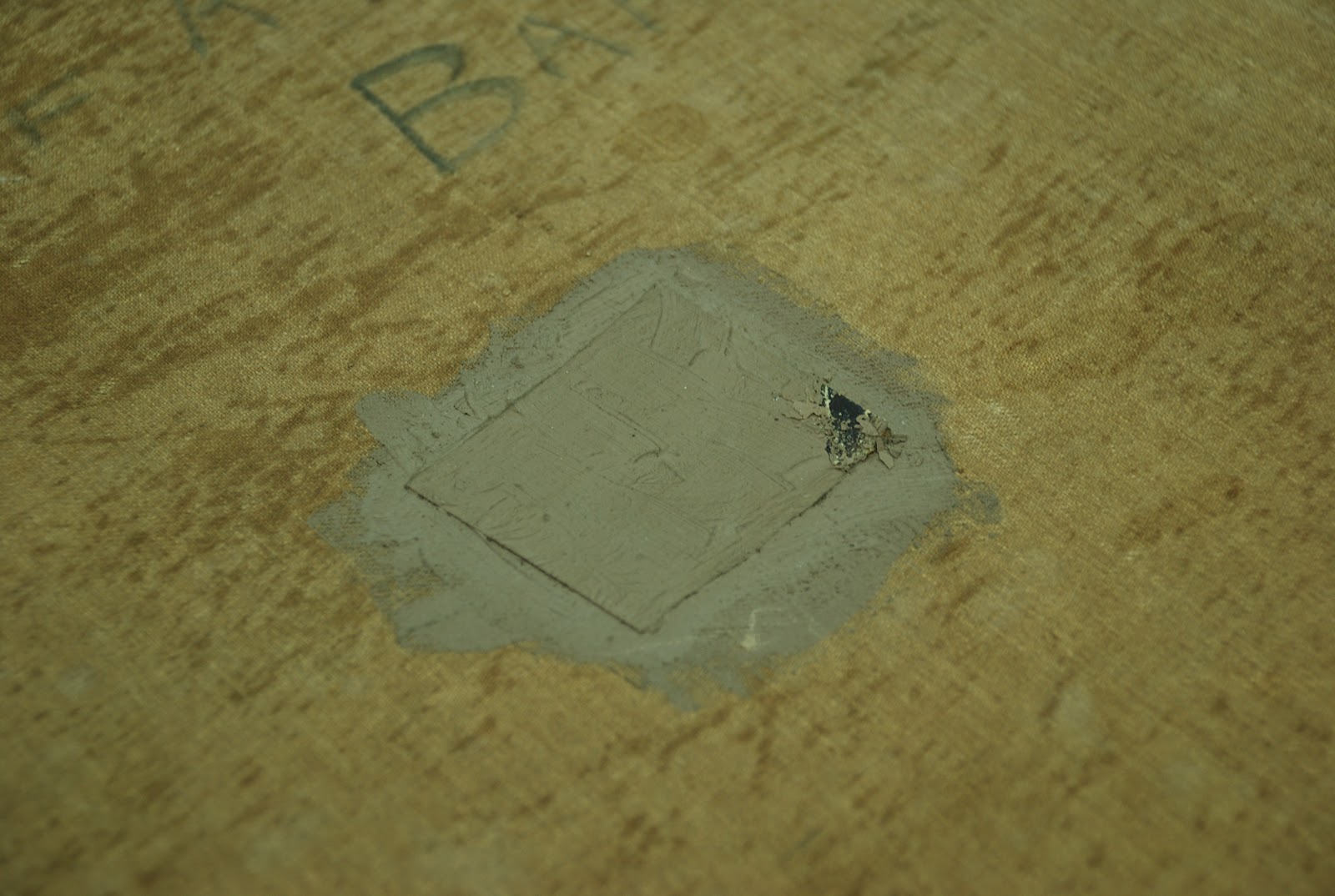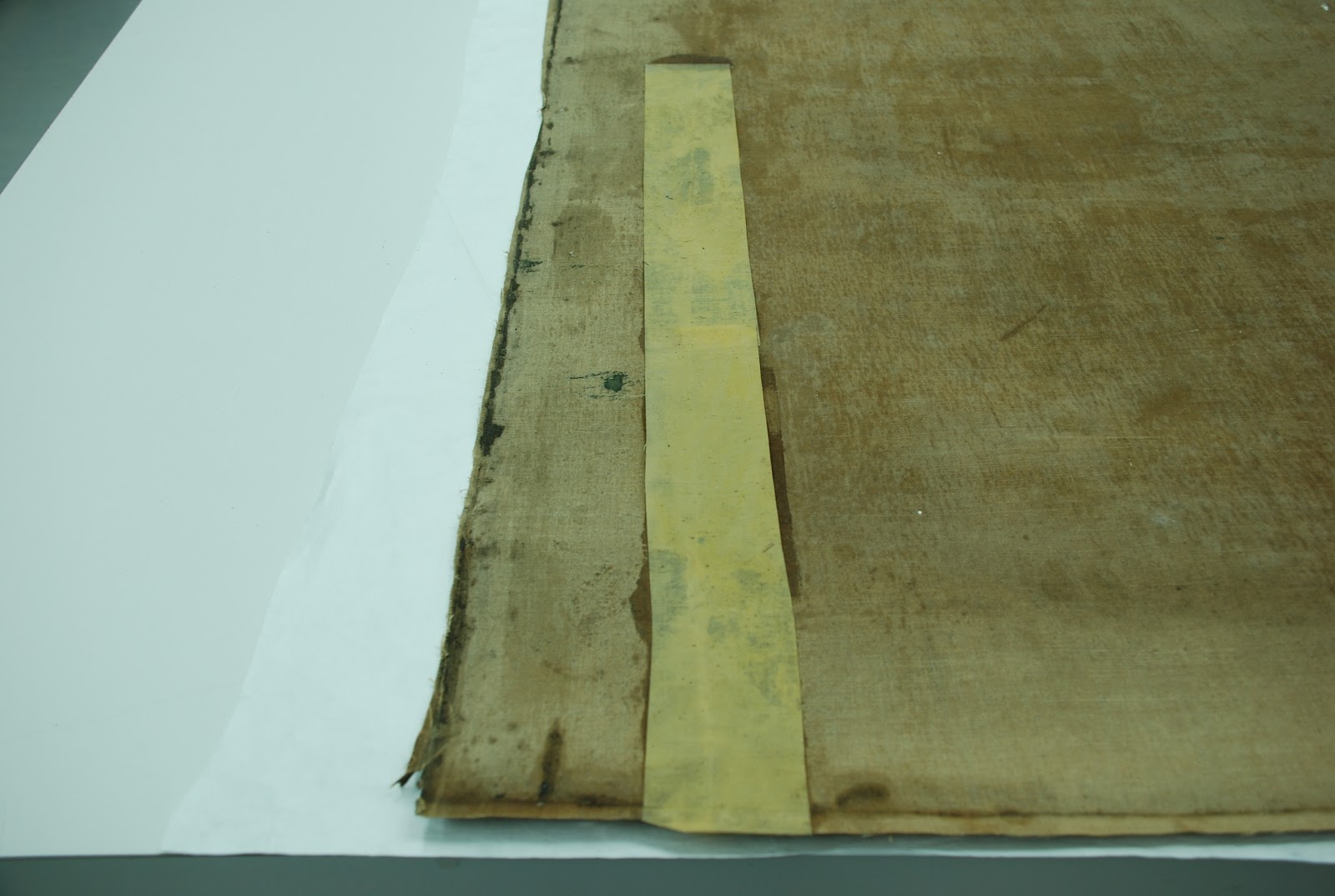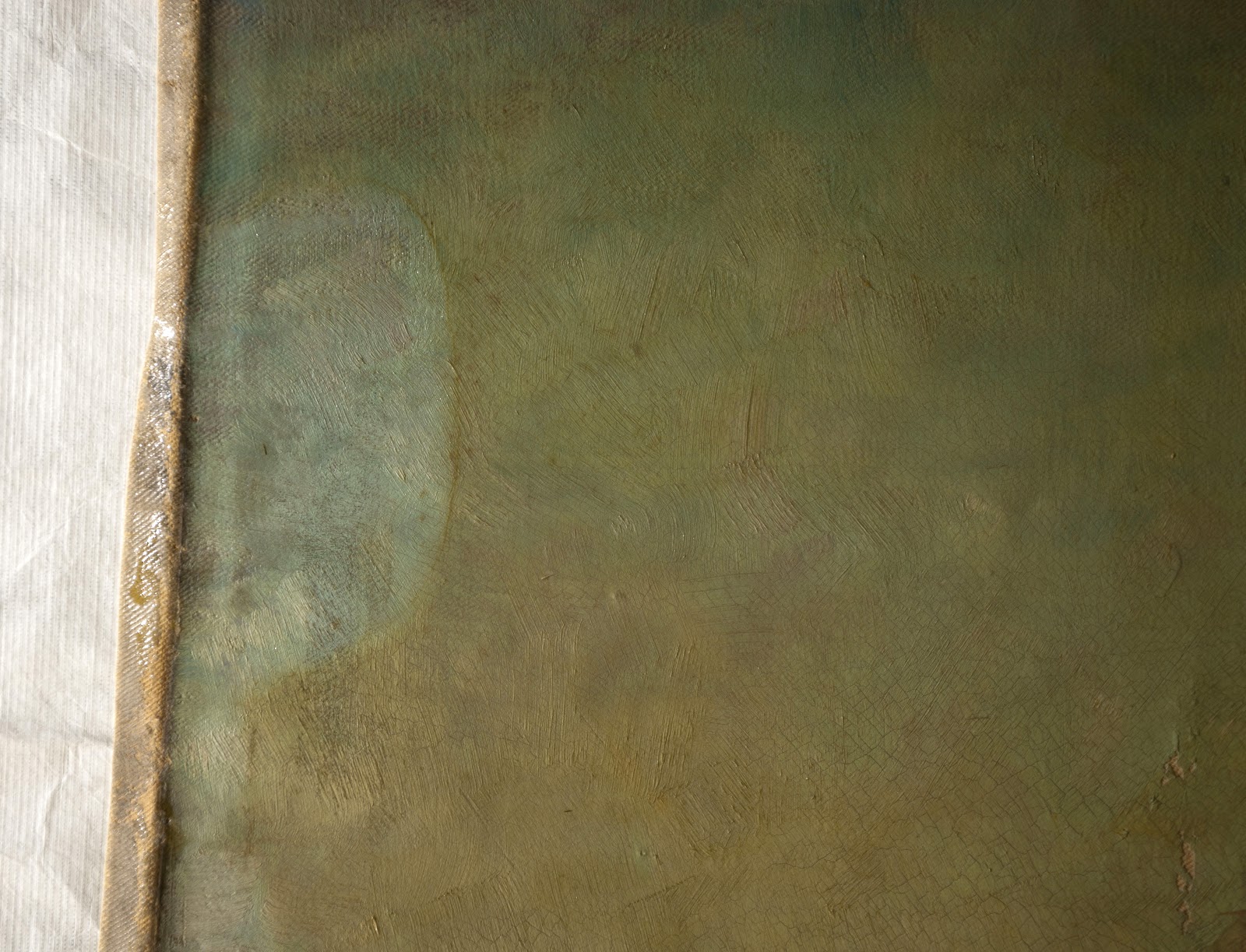When recording a painting’s condition we always start with a description of the ‘support’, which is the material that supports the paint. In this case, it is a linen canvas sealed with an off-white priming layer. The paint is oil and has been applied by brush and worked up quite thickly on the figures.
Originally, the painting would have been attached to a wooden stretcher to keep it taut. A stretcher is like a frame that can be expanded when required and it might have cross-bars for strength if it is very large. However, at some stage in the past, the edges of the painting have been roughly cut, taking away much of the material required for stretching. The original stretcher was also removed and disposed of.
The painting was creased while it was rolled at some stage. It is similar to what many of us have done inadvertently to a favourite poster – rolled it up without any protection and somehow it has gotten squashed. In the case of the Calderon, this has been quite severe, resulting in regular paint losses along the length of the painting, as well as small tears. Oil paint and canvas become increasingly brittle over time and more vulnerable to damage.
You can imagine that trying to handle an unstretched painting this big and fragile would be extremely difficult. The best method is to roll it onto a large diameter cardboard tube (400 mm diameter in this case) so that very little stress is put on the paint layers. In addition, it is always rolled paint side out, to prevent contraction, which could cause cracking.
The painting has had some past repairs including masking tape on a large horizontal tear and a heavy patch for a smaller tear. Some of the worst damages we come across are restorations carried out by people who are unqualified – these are good examples. Unfortunately, poor restoration can cause permanent damage, so we recommend that people always use full members of the professional conservation organisations such as the New Zealand Conservators of Cultural Materials, who you can locate on this website.
Finally the painting is dirty and covered in a discoloured varnish. Natural resin varnishes yellow over time, masking the vibrancy of the colours and making everything look flat and dull. The cleaning tests highlight the difference between cleaned and uncleaned areas.
